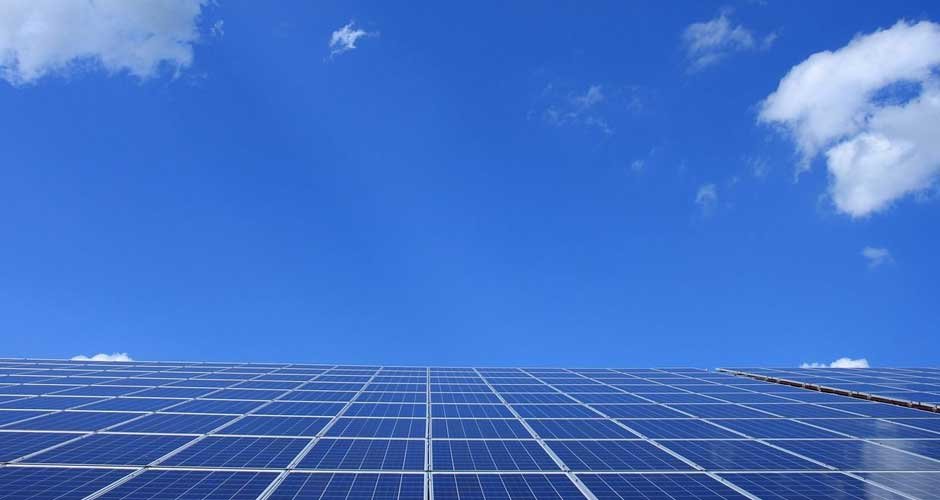Solar power has slowly become an important part of the world’s energy scene. The world needs to quickly switch from fossil fuels to clean energy sources. Solar power stands out because it has a lot of promise, is good for the environment, and is developing quickly.
This article goes into detail about the future of solar power, looking at the newest developments and inventions that could change the way we use and harness this abundant resource.
The Rise of Solar Power
It’s amazing how solar power has grown from a niche technology to a common way to get energy. The price of solar cells has dropped a lot in the last ten years, making them easier for more people to use. Solar power installations are growing very quickly around the world thanks to government benefits, better technology, and more people being aware of climate change.
Advances in Solar Panel Technology
The need for more efficiency, versatility, and cost-effectiveness is driving the solar panel business to change quickly. Here are some of the most recent innovations that are changing the way solar panels work and what that means for the future of energy around the world.
1. Higher Efficiency Solar Cells
Making solar cells that work better is one of the most important steps forward in solar technology. Researchers are looking into new materials and designs because silicon-based solar cells are no longer as efficient as they used to be. Perovskite solar cells, for example, have shown a lot of promise, with efficiency rates in the lab topping 25%.
Not only are these cells more efficient, but they are also less expensive to make, which makes them a good choice for future solar setups.
2. Bifacial Solar Panels
Another cool new thing in the solar business is bifacial solar panels. Traditional solar panels can only collect light from one side. Bifacial panels, on the other hand, can receive light from both sides, which greatly increases the amount of energy they produce.
These panels are very useful in a lot of different places because they can pick up light that is reflected off of snow, water, or even the ground.
3. Flexible and Lightweight Panels
The creation of flexible solar cells and light has opened up new ways to use solar power. These panels can be put up on areas that rigid panels couldn’t go on before, like curved roofs, vehicles, and even portable electronics. Because they can be used in many situations and are easy to install, they are a good choice for many uses.
Innovations in Solar Energy Storage
Effective energy storage options are necessary to make sure that there is a steady supply of energy as solar power production rises. Here are the newest developments in storing solar energy and how they could change how you use and handle solar energy.
1. Advanced Battery Technologies
Energy storage is an important part of solar power systems because it lets you use solar energy even when the sun isn’t out. Battery technology is getting better, which makes storing solar energy more efficient and less expensive.
Although lithium-ion batteries are now the norm, new advances in solid-state batteries and flow batteries offer even more energy, longer life, and better safety.
2. Grid-Scale Storage Solutions
As the amount of solar power produced rises, the need for large-scale energy storage systems grows. To keep extra solar energy and use it when demand is high, grid-scale storage systems like Tesla’s Megapack and other utility-scale battery installations are being put in place.
These systems help keep the grid stable, cut down on fossil fuel use, and make sure there is a steady flow of energy.
3. Hybrid Systems
More and more people are using hybrid solar systems, which use solar panels along with other clean energy sources, like wind or water power. Hybrid systems can provide a more stable and steady power supply by using a variety of energy sources. This solves the problems that come with solar power being intermittent.
These systems are especially helpful in remote places where it’s hard to connect to the grid.
Solar Power Integration and Applications
Solar power is being used in more areas than just standard grid systems because it is being added to more areas. Here are some examples of how solar power is being used in architecture, farming, and transportation without standing out.
1. Building-Integrated Photovoltaics (BIPV)
Building-integrated photovoltaics (BIPV) means that solar panels are built right into the building materials. Building-integrated photovoltaic (BIPV) systems can be built into roofs, walls, and windows, so buildings can make their energy while still looking good. This new technology not only lowers the cost of energy but also makes houses look better.
2. Agrivoltaics
Combining solar power generation with farming is called agrivoltaics. It is a new area that has two benefits. Solar panels are put on top of crops to provide shade and keep water from evaporating while making energy. This method makes the best use of land and encourages growing methods that are good for the environment.
Researchers have found that the microclimate formed by the solar panels can even help some plants grow better, which can lead to higher yields.
3. Solar-Powered Transportation
There is also a move toward solar power in the transportation field. To lower the carbon footprint of transportation, solar-powered electric cars (EVs) and charging stations for EVs are being built. Solar electric vehicles (EVs) made by companies like Lightyear and Aptera are breaking new ground.
These EVs can charge themselves using built-in solar panels, which increases their range and makes them less reliant on the grid.
Embrace a Solar-Powered Future
The way energy is used is changing because of advances and new ideas in solar power technology. New storage technologies, bifacial and flexible panels, and solar cells that are more efficient are all making solar power more practical and appealing. Its uses are even wider when it is used in crops, buildings, and transportation.
If you want to also experience this innovation, check out solar Byron Bay. From higher-efficiency solar cells and advanced storage solutions to new applications and market trends, the solar industry is poised for unprecedented growth.












